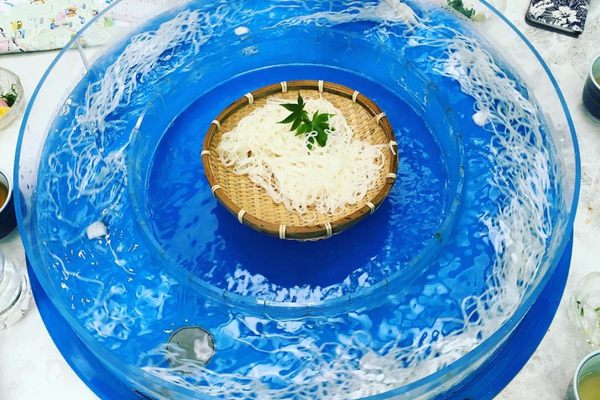When most people think about Hachiya persimmons, often their bright orange-red color comes to mind. Or, those unlucky to try one before it’s ripened to sweetness might recall an astringent taste. But few have experienced the flavorful hoshigaki, the result of an ancient method of drying the fruit. This labor-intensive way of preserving persimmons requires regular massages, drawing comparisons to Kobe beef. The end result is a dried fruit that’s rich, tender, and covered in a frost-white coating of its own sugars.
Producers must first painstakingly peel, then hang their persimmons by the stem to dry as they dangle in the air. The fruits are then massaged nearly every day over the course of a month. The handling breaks down the hard internal pulp, which helps create a rich, jammy interior. Regular massages also smooth out wrinkles and air bubbles where fruit-ruining mold can form and forces sugars to the surface, giving hoshigaki their distinctive frost. After a month, the fruit looks like a sea creature dredged from the bottom of the ocean, but tastes like a tender, spiced dried persimmon.
Needless to say, the amount of labor needed to produce hoshigaki makes them an exquisite, expensive gift. (A Japanese film, Red Persimmons, goes into the minutiae of the practice.) However, Japanese (and Californian) farmers still produce hoshigaki, both for their fine flavor and to preserve tradition.
Where to Try It
-
Penryn Orchard Specialties
155-199 Arizona Ave, Santa Monica, 90401, United States of AmericaThis small California orchard sells hoshigaki at the Santa Monica Farmer's Market on Wednesdays, when in season.
Written By
 Anne Ewbank
Anne Ewbank
















